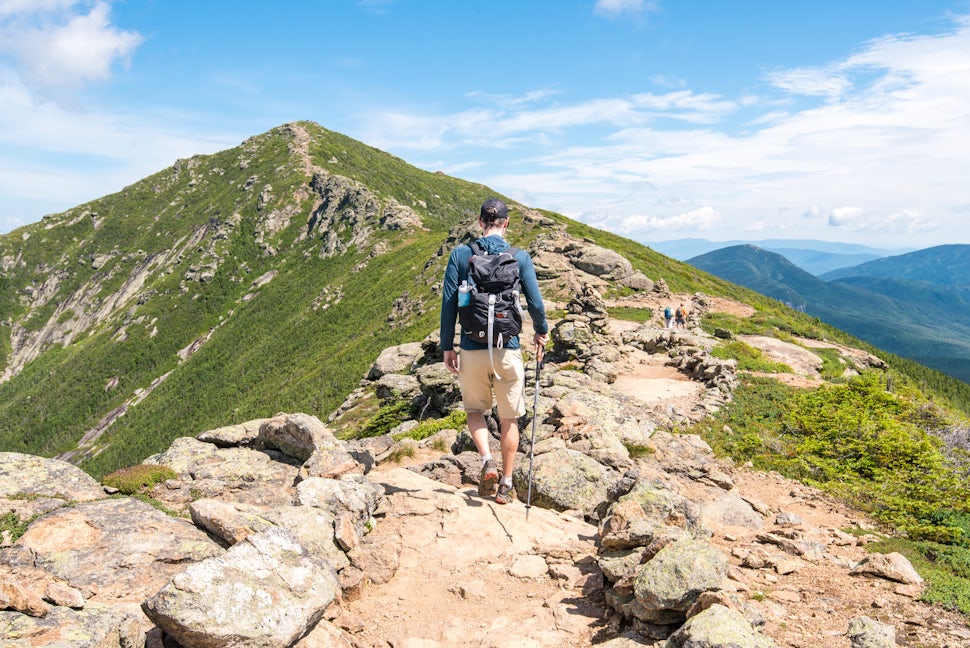Practical Leave No Trace: Stick to the Trail
Keep those boots on the path.

We've all been there. You're hiking along on the trail, keeping an eye out for slippery roots and listening to the crunch of dirt under your boots when a promising viewpoint opens up ten feet to your right. You strain your neck to see over the edge, but a shrub blocks your view. You look down, and it is clear that at least one or two other people have stepped off the trail to get a better view. "What harm can it do?" you think. "I wouldn't be the first one."
So really, what is the harm?
There's an answer for that, but like many things in nature, it's not black and white.
The Purpose of Trails

On the surface, trails may seem like they have one purpose: to get you where you want to go, as safely as possible. Constructed trails do just that—they travel through natural areas, leading hikers to scenic viewpoints or through beautiful terrain. They are, in effect, the transportation grid of the backcountry.
But trails do something else, too: they help protect the landscape you are traveling through. Trails consolidate impact by providing a single route for feet, hooves, and bicycle wheels to stay on. Modern trails are also laid out with durability in mind, and trail designers utilize best practices to create routes that are built to last for decades.
Though building a trail is an impact, it protects the rest of the landscape from harm. As the knowledgeable folks at Leave No Trace say, "it's better to have one well-designed route than many poorly-chosen routes." That's what a trail is for.
What Happens When You Step off the Trail

Stepping off the trail can have both environmental and social impacts.
Environmentally, the trampling of feet off the trail can lead to damage to the surface vegetation and species communities. Trampling can kill plants and/or cause plant reproduction to decrease over time. The compaction of leaf litter and soil can make the ground inhospitable to certain plants, reducing the diversity of plant species in the trampled areas. It can open the door to invasive species growth, or compact the soil so thoroughly that the land will remain barren for years. In alpine zones especially, some plants can take 300 to 500 years to recover if they are trampled.
Going off-trail can also lead to major issues with erosion and trail stabilization—causing damage to the environment and impacting the safety of those traveling after you.
Socially, traveling off-trail can impact recreation management. Frequently trampled areas may be closed to hiking altogether or require recreation managers to erect more signs, fences, and boardwalks that alter the experience.
What You Can Do

When you're hiking, tread lightly on the land by staying within the width of the trail. Trust that the trail designers will give you plenty of opportunities for that perfect picture and that panoramic view you've worked hard to reach.
When you see a wet area on the trail, walk right through it instead of skirting around it and widening the trail. If the trail is wet and the mud sticks to your boots, turn around and try again another day. It may seem like no big deal on the day you're hiking, but the mud sticking to your soles means you are causing damage to the trail that may last for the entire season, or longer.
If you have to travel off-trail, such as in an area where trails don't exist and off-trail hiking is allowed, be sure to follow the Leave No Trace guidelines for backcountry travel. The guidelines are designed to help you determine how you can make the least impact on the terrain you're exploring.
Keeping your impacts to a minimum not only helps to protect the area you're traveling through but also ensures that those who come after you can have just as wild an experience as you did. Think of it as a gift to the future...and we think we can all get behind that.
Cover photo by Sara Sheehy
We want to acknowledge and thank the past, present, and future generations of all Native Nations and Indigenous Peoples whose ancestral lands we travel, explore, and play on. Always practice Leave No Trace ethics on your adventures and follow local regulations. Please explore responsibly!
Do you love the outdoors?
Yep, us too. That's why we send you the best local adventures, stories, and expert advice, right to your inbox.








